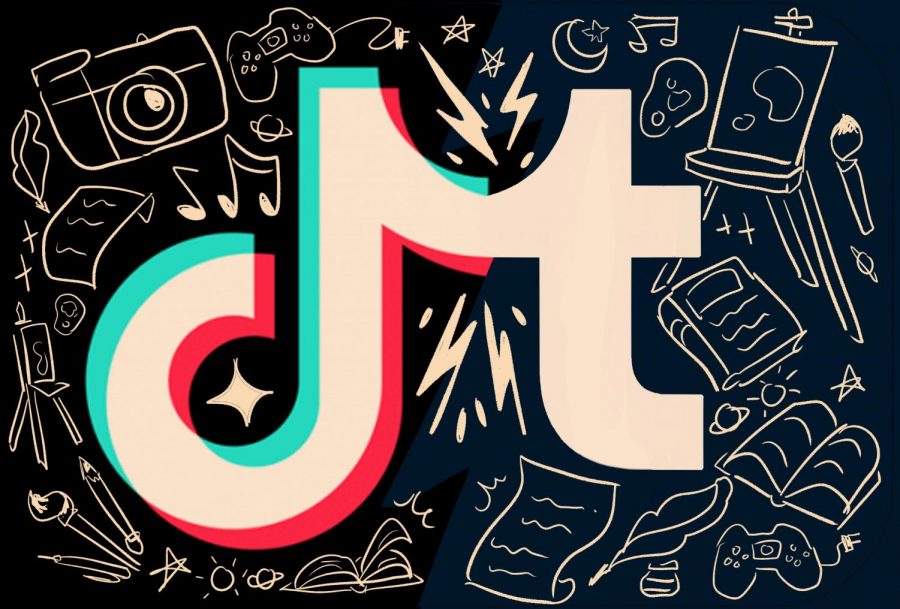TikTok is the new Tumblr
TikTok is the fastest growing social media app that has changed the way we interact on the internet. It brings instant fame to some and provides fun platforms for many people with different interests. Unfortunately, as TikTok grows, so does its negative content. TikTok allows for the creation of content that is harmful and beyond inappropriate for many users, just like Tumblr did in the 2000s.
TikTok is an app for making and sharing videos and the videos on your feed are curated just for you. Tumblr was an app and website that allowed you to share just about anything. With photos, videos, texts, music, and links, Tumblr was coined as a “microblog”.
While the apps clearly have their differences, they have both succeeded in one thing: harming a certain population of their users.
TikTok has been linked to the declining mental health of many of its users as the app promotes a very redundant attractive, skinny, white privilege image by boosting videos from creators with that description. This has caused an upsurge in insecurity and unworthiness.
However, the issues on TikTok go far deeper than just the biased algorithm.
Much like Tumblr, TikTok is a breeding ground for concerning communities. These communities are composed of loyal members that have a mission of spreading their harmful messages, both knowingly and some more innocently.
One of the largest communities is the eating disorder community. Videos are constantly created encouraging eating disorders and giving tips on how to successfully develop one. The “thinspo” posts in which users body check themselves to show how skinny they are and how their disordered eating habits have helped them reach their goal weight have become a triggering point in the eating disorders of others.
Back in the early 2000s, Tumblr had a very similar community: the “Pro-ana” community. Tumblr users would post their skin and bone pictures, self-harm messages and detrimental “dieting” tips. These people even went so far as to arrange pro-ana meetups to discuss their eating disorders and encourage everyone to continue destroying their bodies.
Something else that was incredibly popular on Tumblr was the romanticization of Vladimir Nabokov’s Lolita. Perhaps due to the aesthetics of the movie, the story became incredibly popular amongst teenage girls. They took to post their yearning for an older man on Tumblr, and so the community grew.
As society changed, and we began paying more attention to victims of grooming and abuse, one would expect that the romanticization of a pedophile like Lolita’s Humbert Humbert would diminish. One would be incorrect.
Today, on TikTok, the praise and idealization of stories like Lolita and inappropriate age gap relationships persists and is worse than ever before. Teenagers constantly make videos about being with much older men. More troubling are the videos in which women as young as 18 are in relationships with 40-year-old men and showing off their relationship. The comments on these videos are mostly ones of jealousy and very few people stop to consider the fact that this woman is likely being groomed.
Another tragic side of TikTok is the mental health community. These people, instead of advocating to break the stigma surrounding mental illness, romanticize it and turn depression into an aesthetic.
While some people may find that using humor as a coping mechanism is helpful to them, it can likewise be harmful to others and make depression seem like it is something far more desirable than it is.
Of course, this does not apply to everyone who makes videos about their mental health but it is many users that make harmful videos.
Perhaps the problem is less about the content being made, and more about the fact that we have not yet reached the point we need to be at for mental health to be taken seriously.
Much like its successor, Tumblr was guilty of the same thing. The ‘Sad Girl Aesthetic’ ravaged the site and influenced many young, impressionable girls in the worst way possible.
Tumblr users completely romanticized and idealized being a pretty, sad girl by posting quotes about depression, sadness, self-harm, and by posting pictures and edits of beautiful girls crying which turned being depressed into a desirable accomplishment. Many users wanted to be just like the girls they saw on the app and forced themselves into depression.
TikTok has attempted to control the exposure to such videos by banning hashtags. However, where there’s a will there’s a way.
Despite all of this, TikTok nor Tumblr are not inherently bad. They are both culturally significant to different generations and can be used in inspiring and creative ways. It gives many people a platform to share their work and interact with people from all walks of life.
At the end of the day, it is important to bring these issues on social media to light so that we can make the impressionable users who are vulnerable to such damaging content aware of the severity of what they are viewing.



